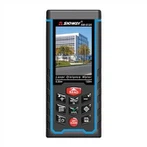Non-isolated switching power supply
The non-isolated switching power supply does not have the physical separation of the transformer, and one end of the input end and the output end are connected together.
The non-isolated switching power supply does not have the participation of a high-frequency transformer, and directly controls the high-voltage direct current through a high-speed switch to obtain low-voltage direct current. During the conversion process, the switching power supply control chip has a high voltage drop, so there is no way to obtain a large output current.
The output current of such schemes generally does not exceed 300mA. It is generally used in applications where the output current is small, the volume requirement is small, and the cost requirement is low.
The high-frequency ferrite transformer in the switching power supply is an important device for high-frequency energy conversion.
The iron core used in the switching power supply is a ferrite material, while the loss of ordinary silicon steel sheets is too large to meet the working environment under high frequency conditions.
The 220V AC power is rectified by the BD1 bridge, and then passed through the π-line filter composed of C1, L1, and C2, and the DC voltage after rectification is stabilized at about 300V. The two series resistors R2 and R3 send the starting weak current to the 3-pin INV to establish the oscillation frequency to control the conduction of the MOS tube.
In addition, once the oscillation is established, another auxiliary winding on the primary provides a stable driving current to control the MOS tube and continues to work continuously.






